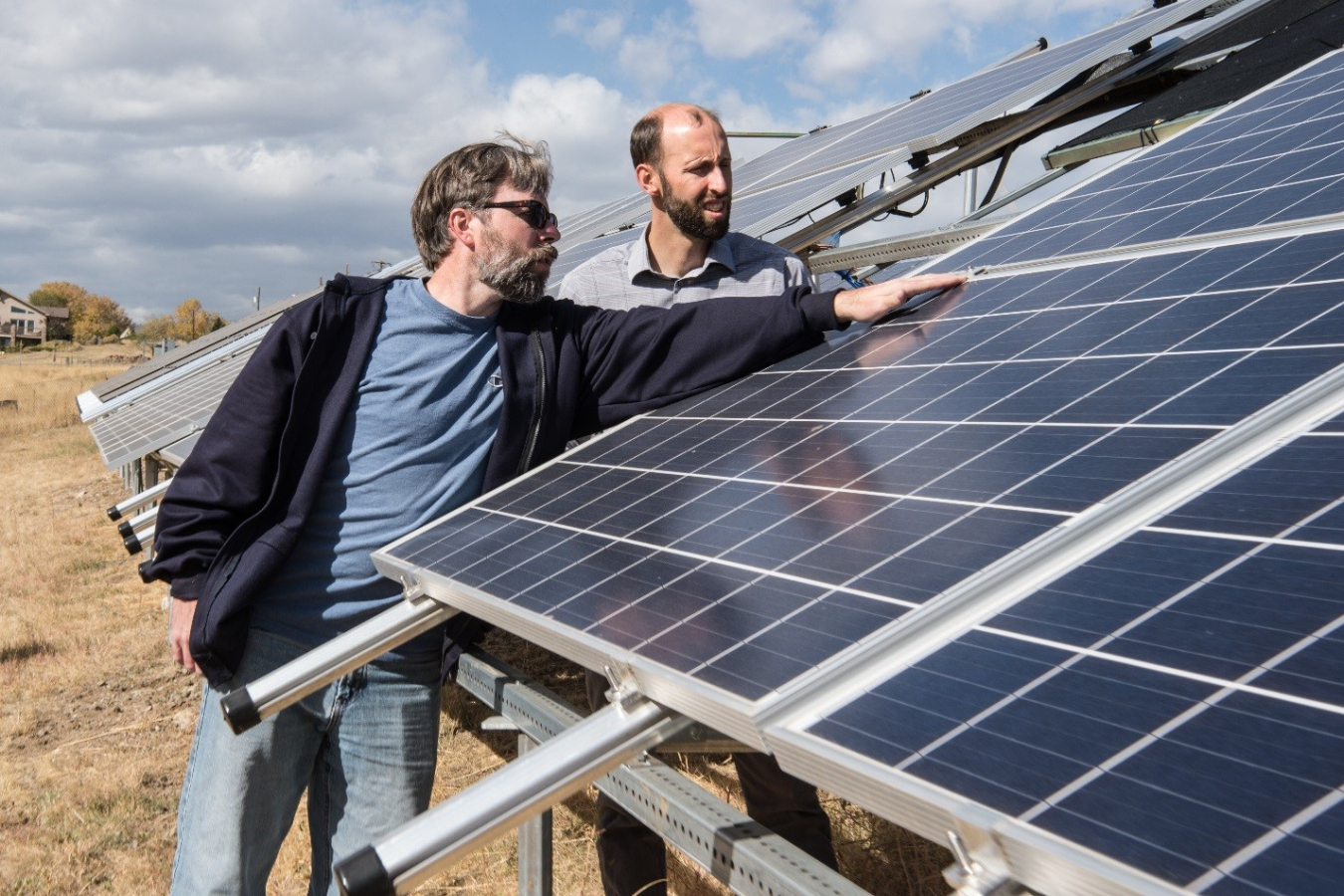SunShot funding is enabling researchers from the Energy Department’s National Renewable Energy Laboratory (NREL) to develop a solution for customers, PV companies, and investors: international standards that consistently identify sources of high qual...
December 29, 2016
Researchers monitor the progress of the new photovoltaic array at the National Renewable Energy Laboratory. Photo Courtesy | National Renewable Energy Laboratory
From a business perspective, the plummeting cost of a product can pique concerns over production quality. Today, investors buying and selling solar assets must determine whether low-cost solar panels produced at high volumes will consistently deliver expected performance levels in the field. Any uncertainty causes investors to send inspectors—each of whom have their own standards and expectations—to watch over the photovoltaic (PV) manufacturing process, slowing progress and ultimately costing end users millions of dollars.
SunShot funding is enabling researchers from the Energy Department’s National Renewable Energy Laboratory (NREL) to develop a solution for customers, PV companies, and investors: international standards that consistently identify sources of high quality solar panels.
Alongside the National Institute of Advanced Industrial Science and Technology in Japan, NREL created the PV Quality Assurance Task Force (PVQAT) to create international standards for PV modules and systems. Funded by the SunShot Initiative, the PVQAT establishes evaluation systems for module durability, inspection guidelines, and PV system design, installation, and operation certifications so that the global PV conforms to the same standards of quality.
In partnership with the International Electrotechnical Commission (IEC) the PVQAT helped to create IEC 62941, a technical specification that can be used in conjunction with ISO-9001 product quality management standards. IEC 62941 outlines procedures for manufacturers to follow in order to receive product certification. Under the new standard, manufacturers must obtain IEC certification and establish ongoing reliability testing, address potential product failures throughout the life of a product, and obtain certification on how to trace products in case of a recall or warranty issue. To make sure that these standards are consistently enforced, the PVQAT and IEC have also implemented checklists, pass-fail requirements, and audits.
Already adopted by major PV manufacturers, solar companies across the world are beginning to use the IEC 62941 standards and work toward certification.
Just like a refrigerator or a car can last more than 15 years, customers want to make sure that they get the full 25-year lifespan out of their solar panels. The new manufacturing standards specify the quality of panels, bolstering the thriving hundred-billion dollar solar industry by adding in customer protections that double down on the quality of the panels customers receive. The additional product certainties eliminate redundant inspections and help investors feel more confident in solar assets. This reduces perceived risks and enables investors to reduce their transaction costs, driving down the overall cost of solar and improving long-term bankability for the industry.
Learn more about the SunShot Initiative’s Photovoltaics program.

